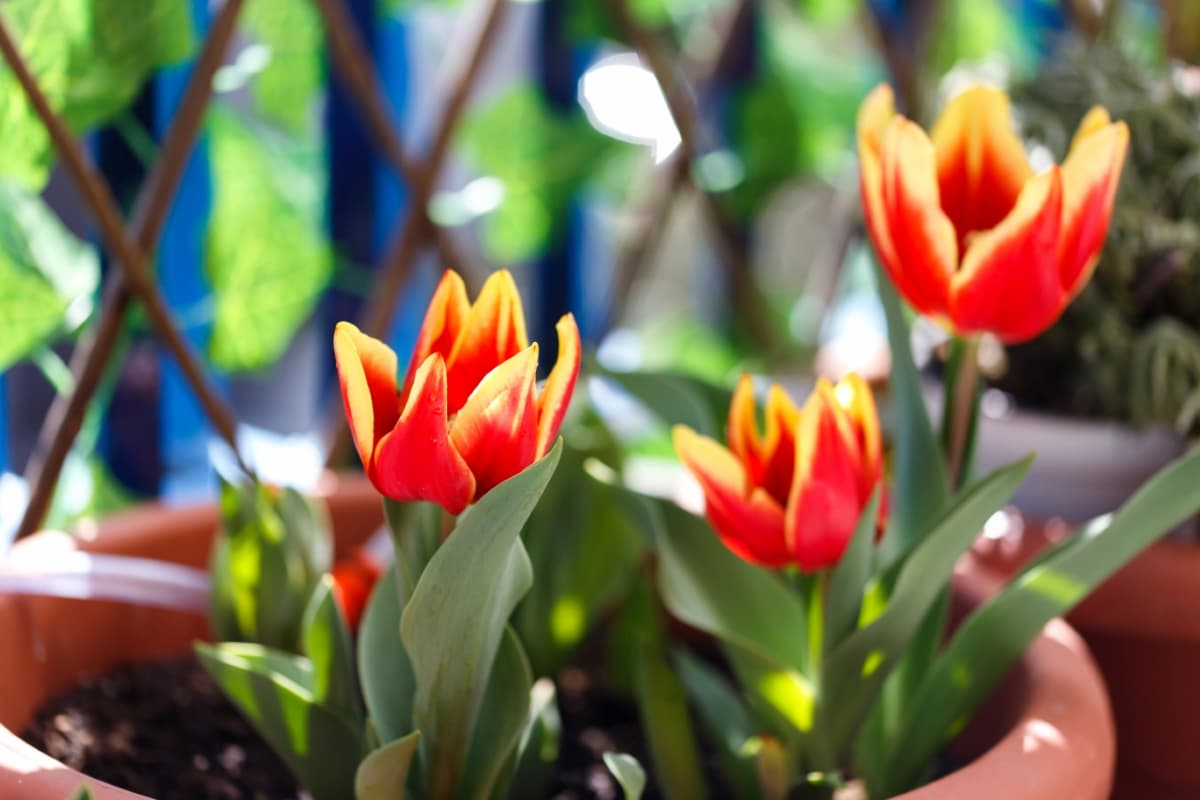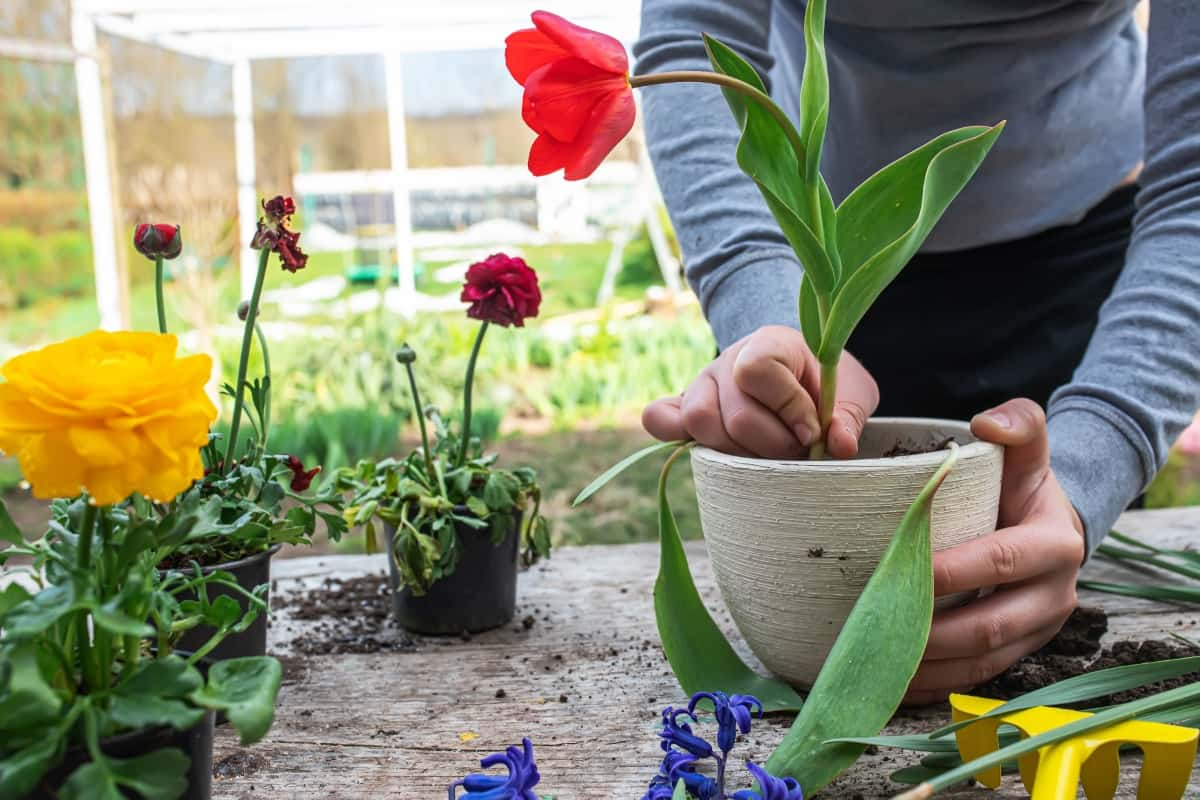Tulips are popular spring flowers known for their vibrant colors and graceful appearance. However, like any living organism, tulips can sometimes experience stress and decline. Reviving dying tulips requires understanding their characteristics, identifying signs of stress, and implementing natural and organic treatments. In this article, we will explore the best steps to revive dying tulips using scientifically backed information and data.

About Tulips Characteristics
Tulips, scientifically known as Tulipa, belong to the Liliaceae family. They are herbaceous perennials that typically grow from bulbs and produce large, cup-shaped flowers. Tulips come in various colors and sizes, ranging from single to double blooms. They require well-draining soil, adequate sunlight, and proper care to thrive.
Causes of Dying Tulips
- Shallow planting: Bulbs planted too shallowly are susceptible to weather conditions and pests.
- Pests and diseases: Aphids, bulb mites, snails, and slugs can damage tulips.
- Poor drainage system: Excess moisture leads to root and bulb rots.
- Overwatering: Watering too frequently or during dormancy can cause basal rot.
- Lack of proper sunlight: Insufficient sunlight affects growth and flowering.
- Dehydration: Prolonged drought leads to yellow, dry leaves.
- Natural death: Tulips naturally die after blooming.
In case you missed it: 16 Common Tulip Plant Problems: How to Fix Them, Solutions, and Treatment

Remedies for Dying Tulips
- Adequate sunlight: Transplant to a sunny spot, but provide shade in intense heat.
- Avoid overwatering: Water once a week and check soil moisture before watering.
- Ensure good drainage: Add mulch to absorb excess moisture.
- Provide space for growth: Divide overcrowded bulbs and replant.
- Maintain proper planting depth: Plant bulbs 6-8 inches deep.
- Use healthy soil: Ensure fertility and drainage.
- Control pests and diseases: Use neem oil, insecticidal soap, and traps; isolate and treat diseased plants.
- Deadhead to conserve energy: Remove spent flowers to encourage vigorous growth.
- Fertilize sparingly: Feed in spring and fall with balanced or bulb fertilizer.
Natural and Organic Treatment to Revive Dying Tulips
Identifying Signs of Stress: Before attempting to revive dying tulips, it is crucial to identify the signs of stress. Common indicators include yellowing or wilting leaves, drooping stems, and stunted growth. By carefully observing the tulips’ symptoms, you can determine the specific issues they are facing and address them accordingly.
Organic Amendments for Nutrient Boost: Providing organic amendments can give dying tulips a nutrient boost. During fall or early spring, ground-feeding tulips with an organic high-phosphorus fertilizer can help wake bulbs from dormancy, stimulate root growth, and enhance nutrient absorption from the soil. Organic fertilizers enriched with bone meal, blood meal, or composted manure can provide essential nutrients needed for tulip recovery.
Balancing Moisture Levels: Proper moisture balance is essential for the health of tulips. Reviving dying tulips involves ensuring they receive adequate water without becoming waterlogged. Overwatering can lead to root rot and damage to the plants. It is crucial to consider the soil’s drainage capabilities and adjust watering practices accordingly.
In case you missed it: How to Prepare the Soil for Tulip Plants: Best Soil Mix, pH, and Compost

Finding the Perfect Spot: Tulips thrive in areas with full sun or partial shade. When reviving dying tulips, it is important to plant them in a location that receives the appropriate amount of sunlight. Adequate sunlight exposure helps tulips regain strength, promotes healthy growth, and enhances their overall resilience.
Preventing Fungal and Bacterial Infections: Fungal and bacterial infections can contribute to tulip decline. To prevent such infections, avoid overcrowding tulips and ensure proper air circulation around the plants. Organic fungicides or natural remedies can also protect tulips from diseases. These treatments can include neem oil, garlic oil, or copper-based fungicides, which are effective against common tulip diseases like botrytis and tulip fire.
Keeping Aphids and Beetles at Bay: Aphids and beetles are common pests that can damage tulips, leading to their decline. To keep these pests at bay, use natural pest control methods. Beneficial insects, like ladybugs and lacewings, can be introduced to the garden as they feed on aphids. Organic insecticides, like insecticidal soaps or oils, can also be utilized to control aphid and beetle populations.
Supporting Weak Stems: Weak stems can cause tulips to droop or fall over. Supporting these weak stems is crucial for the revival of dying tulips. Stakes or other supports can be used to keep the stems upright, ensuring proper growth and preventing further damage. Gently tie the stems to the support, providing stability and promoting healthier growth.
In case you missed it: Growing Tulips Indoors from Seed in Pots, Containers

Natural Fertilizers and Compost Teas: Using natural fertilizers and compost teas can provide essential nutrients to dying tulips. Organic mixes containing blood meal, greensand, or bone meal can be used to fertilize tulip bulbs. Applying these natural fertilizers in the fall allows the bulbs to absorb the nutrients they need for healthy growth. Compost teas, made from composted organic matter, are applied as a foliar spray to provide nutrients and promote overall plant health.
Encouraging Strong Roots: Strong roots are vital for the survival and revival of tulips. To encourage strong root development, ensure that tulips are planted in well-draining soil. Adequate water and nutrient supply are also crucial for root growth. By providing proper care, tulips can establish a robust root system, enabling them to absorb nutrients efficiently and withstand environmental stressors.
Preparing for Dormancy and Reblooming: After tulips have finished blooming, it is important to prepare them for dormancy and reblooming. Clip off the dead flowers from the stem, allowing the foliage to die off naturally. Store the bulbs in a cool and dry place in early November, and then plant them in your garden according to your planting zone. This process allows the tulips to rest, replenish their energy reserves, and prepare for the next blooming season.
Reviving dying tulips requires natural and organic approaches. Ensure adequate sunlight, proper watering, and soil drainage. Control pests and diseases with neem oil and traps. Deadhead spent flowers for energy conservation. Fertilize sparingly in spring and fall. With these steps, your tulips can thrive in a healthy, vibrant garden.
- Flower Garden Designs and Layouts for Beginners
- Planting and Spacing Techniques in Papaya: A Beginner’s Guide
- Growing Gold: Essential Techniques for Planting Pineapples
- How to Make Kalanchoe Plant Bushy: Home Remedies and Solutions
- 11 Reasons Why Your Gardenia is Not Blooming: Home Remedies and Solutions
- Eco Elegance: The Guide to Designing a Drought-Tolerant Landscape
- Gardening on a Slope: Strategies for Hillside Landscaping
- Nourish and Flourish: Top Organic Mulches for Thriving House Plants
- Everything You Want to Know about Indian Mogra Flower: Discover Uses and Growing